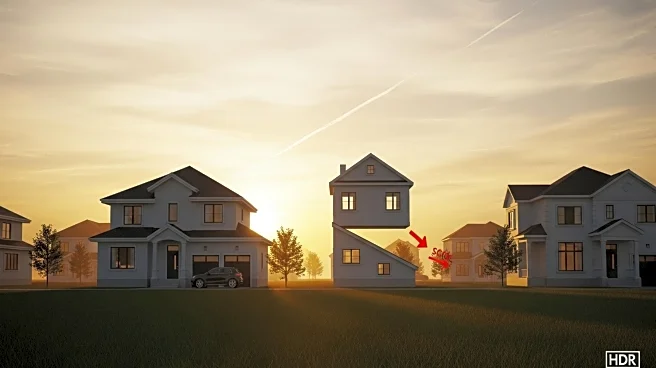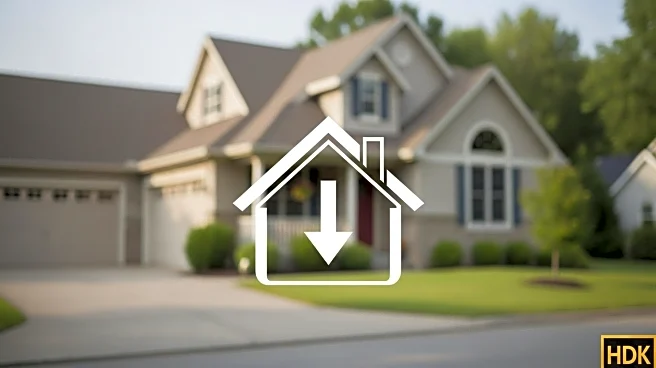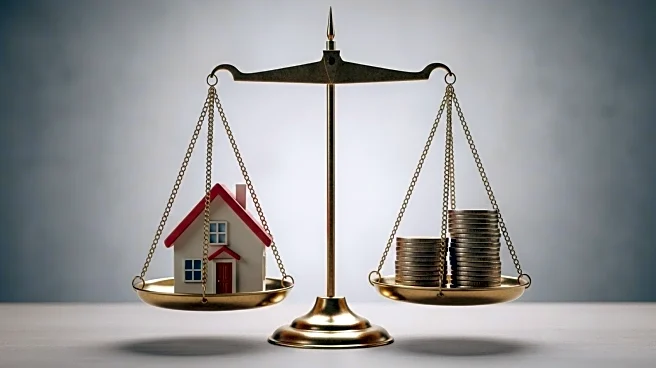What's Happening?
Mortgage rates in the U.S. have decreased from around 7% at the beginning of 2025 to a range of 6.25% to 6.5%, leading to increased mortgage activity. The easing of mortgage rates has reduced the lock-in effect, where homeowners are disincentivized from moving due to low existing mortgage rates. The share of mortgages with rates above 6% has risen, indicating more homeowners are willing to move despite higher rates. The decline in rates has spurred refinancing activity, particularly among those with mortgages above 7%.
Why It's Important?
The easing of the mortgage rate lock-in effect could stimulate the housing market by encouraging more homeowners to sell and buy new properties. This could lead to increased housing inventory and potentially stabilize home prices. The trend also reflects broader economic conditions, including interest rate policies and consumer confidence. The shift may benefit the real estate industry and related sectors, but it could also pose challenges for homeowners adjusting to higher rates.
What's Next?
Mortgage rates are expected to remain above 6% for the foreseeable future, with potential fluctuations based on economic conditions. The housing market may continue to see increased activity as more homeowners take advantage of the current rate environment. Lenders and real estate professionals will need to adapt to changing market dynamics and consumer preferences.










